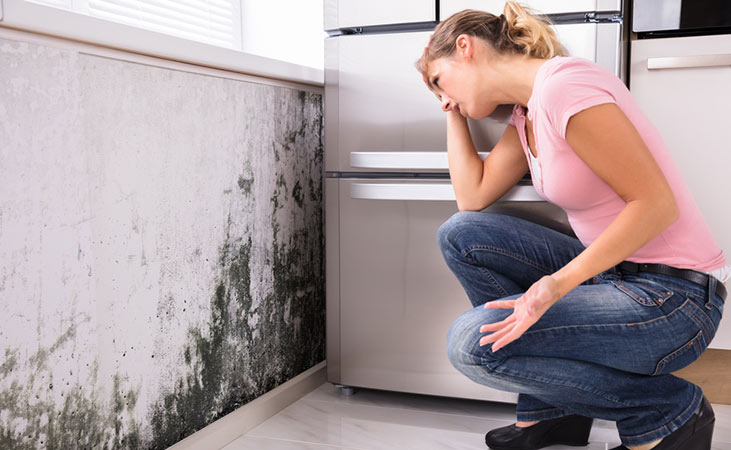According to Stiftung Warentest, mold spreads in every second household. So it stands to reason that sooner or later you will deal with mold removal or mold prevention.
There is a widespread belief that reducing humidity levels is the first right step. Mistakenly, dehumidification machines are often used.
In this post, we’ll tell you why humidity is the wrong lever and what action you can take instead.
These are the conditions that mold needs!
Before we tell you about mold prevention, we would like to give you an overview of how mold is formed in the first place.
The unpleasant fungus develops only when two conditions are present:
- a cold surface (cooler than 15 degrees Celsius) &
- high humidity (higher than 60%).
If one of the two conditions is missing, the mold has no chance.
High moisture content is important for health!
If the moisture content is below 40%, serious health problems can occur.
Below this level, your mucous membranes begin to dry out and can no longer fully perform their functions.
The skin and respiratory tract are also affected. If the value even falls below 23%, it can become particularly critical for you. Humans can hardly compensate for the loss of moisture when breathing.
Harmful only in case of existing mold infestation
High humidity only poses a danger if mold spores are already present in the room.
When the humidity level exceeds 60%, the unpleasant fungus multiplies. If the value is 80% or more, mites, fungi and parasites even spread particularly quickly.
However, if there is no mold in the room, elevated humidity levels do not cause a significant health risk.
Buildings also suffer during drought
In rooms, overdrying can lead to structural damage. This affects not only the walls, but also all the woodwork.
Typical effects are, for example, that floorboards and parquet floors warp.
In addition, electrostatic charges form quickly in dry air. They cause annoying, small electric shocks.
Alternative: Temper cold surfaces!
So you don’t have to miss out on the all-important humidity and fight mold at the same time, there is an alternative.
You temper your surfaces. If your wall surfaces have a temperature above 15° Celsius, mold cannot form despite high humidity.
You have two options to implement this step.
- You can
Surfaces via convection heat
(e.g. radiators) heat. However, this often takes too long and at the same time removes too much moisture! - You can
Surfaces over a surface heating
temper. Since this system works mainly via radiant heat, the moisture content remains almost unchanged!
Surface heating also has the advantage that you can ventilate in winter without loss of temperature. This is possible because the heating system heats mainly the matter and only barely the air.
Conclusion: The moisture content influences your well-being level!
By reducing the humidity in the room, you are fighting mold, but you are endangering your health in the process.
A humidity level of 40 to 60% is necessary to keep you fit and vital. Therefore, the healthiest approach to mold prevention is to temper the surfaces in the room.
The market offers several options. The most effective of these is panel heating.
Our panel heating does not give mold a chance and is healthy for people. If you too would like to benefit from mold-repellent and healthy radiant panel heating, click here.
Yes, I would like to benefit from the mold-repellent and healthy panel heating.
Photo: Andrey Popov – fotolia.com



